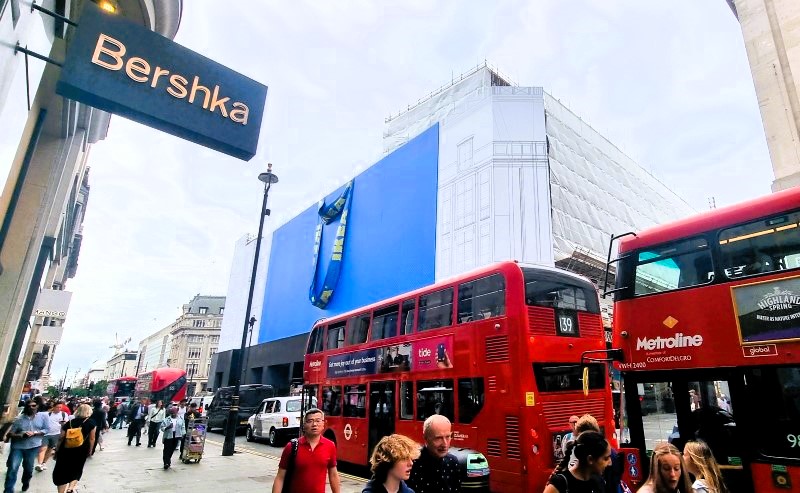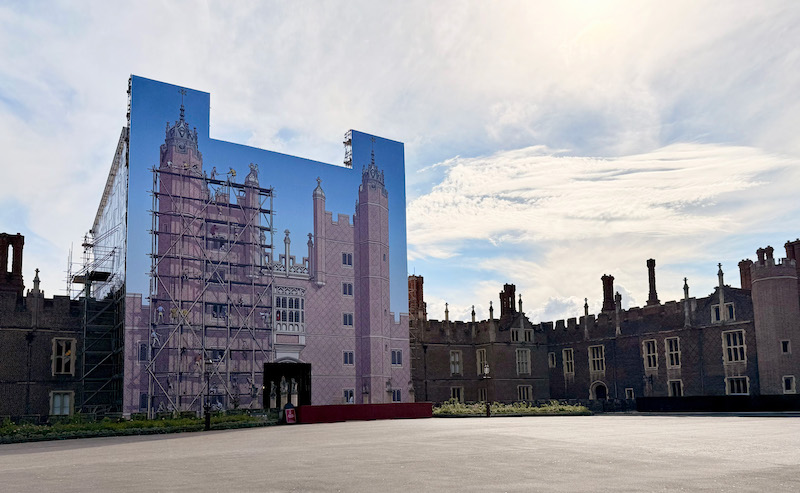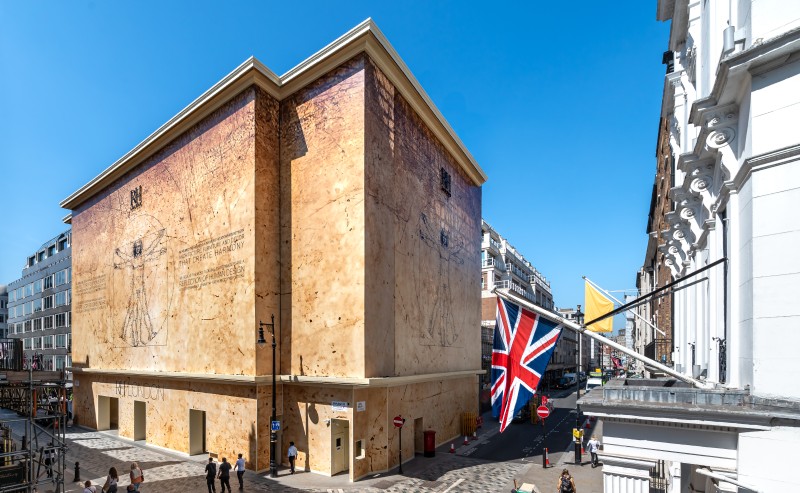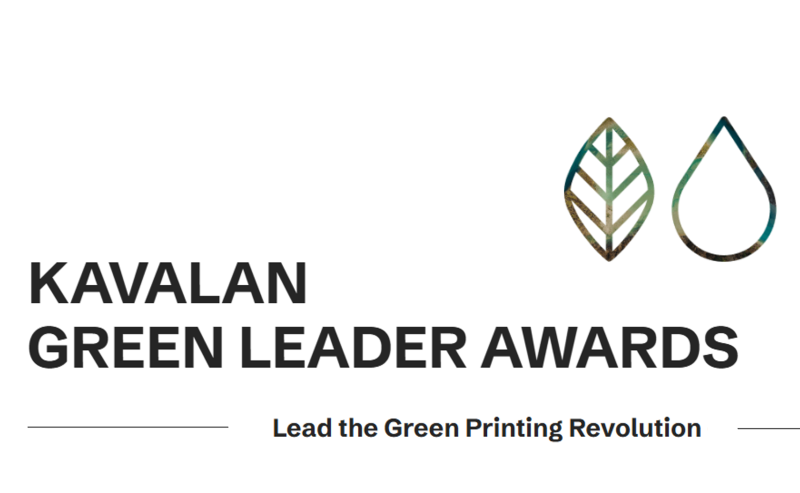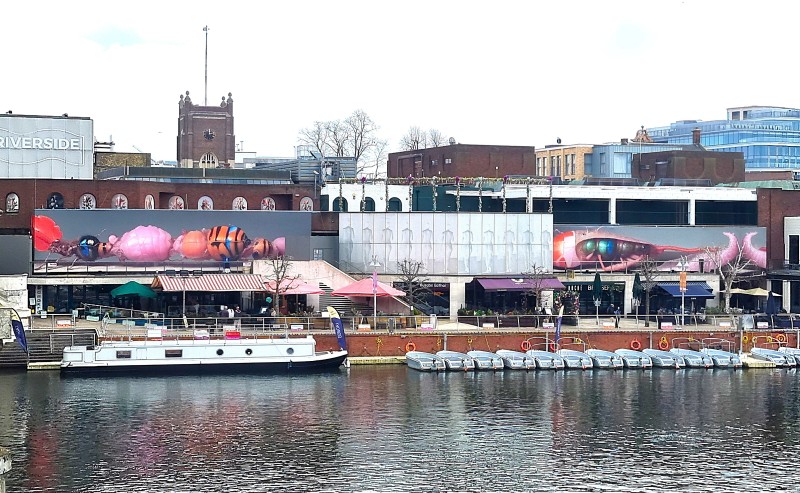Big banners, bold branding – see buildings dressed for success
Key points – at a glance
-
Definition: Building wraps are extra-large printed banners or vinyls that cover building facades, scaffolding, hoardings, or other structures.
-
Purpose: They hide unsightly construction or refurbishment work and provide 24/7 advertising exposure in busy urban spaces.
-
Benefits: Wraps transform dull work sites into attractive landmarks, reinforce brand messaging, improve public perception, and even feature artistic designs (e.g. trompe-l'œil facades).
-
Materials: Typically made of heavy-duty printed PVC or PVC-free mesh with UV inks for durability. Modern wraps are designed to withstand weather while allowing some light or air flow as needed.
-
Applications: Used by developers and contractors to conceal renovation works, boost marketing campaigns, celebrate events, or simply beautify the community.
-
Examples: High-profile projects (like the vaulted Admiralty Arch or Oxford Street's IKEA pop-up) showcase wraps in action, blending safety and style.
-
Regulations: Installing an advertising wrap usually requires planning consent, but solid-color wraps often avoid it. Embrace's expert team handles surveys, designs, permits, and installation end-to-end.
What are building wraps?
A building wrap (also called a building banner or scaffold wrap) is essentially a giant printed banner applied to a building's exterior or scaffold. These custom-printed graphics can cover a whole facade, multiple storeys, or even an entire building. By day they look like art or advertisements; by night they often light up like signage. The key is that they're printed with high-resolution graphics, not just plain protective coverings. This makes them ideal for contractors and owners who want to shout about their project or brand instead of hiding it.
For example, Embrace Building Wraps describes these as "extra-large outdoor banners covering the front facade or even an entire building with high impact graphics". In practice, you'll see wraps on construction sites in London, Manchester or anywhere – turning an ugly refurbishment project into a talking point. A blank scaffold netting might keep debris in, but a printed wrap tells a story: it can preview the finished building, display a corporate logo, or simply add beauty to the street.
Building wraps are multi-functional. They serve as visual screening to conceal construction or scaffolding, meeting health & safety needs; brand advertising to build awareness among pedestrians and drivers; and aesthetic enhancement to improve the area. As Embrace puts it, these wraps "can be so much more than functional…convert them into high impact decorative scaffold wraps & creative printed site hoardings which are powerful and effective marketing tools". In short, building wraps merge practical site covering with eye-catching marketing.
Why use a printed building wrap?
Imagine walking past a tall building undergoing work. Without a wrap, you'd see bare scaffolding and hoardings. With a printed wrap, you might see a colorful mural, a brand message, or even a photo of the finished architecture. This dramatically changes first impressions. Construction projects can spook neighbors or diminish a street's appeal, but wraps flip the script. They turn a messy site into a positive spectacle and a marketing asset.
-
Concealing and beautifying: By covering scaffolding and hoardings with vivid prints, wraps "change the appearance of your development from a busy working building site to a stunning visual treat". This is great for keeping residents and passers-by happy. In many cases Embrace clients choose a "trompe l'oeil" design – an ultra-realistic graphic that tricks the eye into thinking the facade is intact. A scaffold can be hidden behind a printed photo of stonework or brick. The site becomes almost invisible, or at least attractive.
-
Advertising and brand building: A building wrap is basically a billboard on steroids. It gets noticed 24/7. Embrace notes that such wraps allow you to "promote key brand and marketing messages as an advertising hoarding to the passing pedestrian & vehicular audience". For property developers, this means reinforcing brand identity or highlighting the developer's name on a massive scale. For marketing agencies or retailers, wraps can advertise products or events to thousands each day. Even large exhibition spaces or stadiums use giant wraps to engage fans. In short, the wrap can recoup some cost by selling ad space or showcasing sponsors.
-
Regulation and planning: In the UK, any advertising on a site usually needs local authority permission. A plain color wrap typically doesn't advertise, so it may skip planning consent. But as soon as you add logos or slogans, you'll need approval. Embrace's experts handle that process; they coordinate permits and risk assessments for you. Their process "will arrange all site access & required permissions" so that the creative design can go up legally and smoothly.
-
Functional benefits: Beyond looks, wraps help with dust control and site security. Mesh wraps allow airflow (reducing wind load on scaffolds) and block dust flying out. According to Embrace, mesh "eases the wind loading slightly, allowing air flow through the material". Solid PVC banners, on the other hand, provide a sturdy shield against the elements. Both keep debris inside the site. This can improve safety and reduce complaints from neighbors.
-
Sustainability: Modern wraps can be PVC-free or recycled. Embrace offers eco-friendly materials. For example, at the Kavalan Green Leader Awards, Embrace was praised for its "environmentally conscious, high-impact building wraps, emphasizing sustainability". They even pioneered a PVC-free cloth that can be repurposed or safely disposed. Choosing a sustainable wrap aligns with CSR goals, which can be a selling point for developers and agencies.
How are building wraps made?
Creating a building wrap is a high-tech printing and fabrication job. Here's a simplified rundown of the process:
-
Survey and design: Embrace visits the site to measure dimensions and assess structural needs. Their designers will often create CGI mock-ups or trompe l'oeil concepts using photographs or drawings. The goal is a seamless final image.
-
High-resolution printing: The final graphics are printed on industrial printers. Embrace usually uses heavy-duty PVC or PVC-free vinyl (and sometimes mesh). The vinyl is coated with UV-resistant inks so colors stay vivid even in sun or rain. Eyelets, reinforced hems, and Keder edges are often added to each panel for durability.
-
Support system: Depending on the site, various frames or fixings are used. Embrace describes options like offset frames, wire-frame systems, and flush scaffold wraps (where a flat scaffold is used). These systems ensure the banner stays taut and aligned. For example, an offset frame pushes the wrap out away from the scaffold so it looks drum-tight with hidden ties. On complex buildings, they might use multiple panels and custom frames. The chosen method depends on height, building shape, and whether the scaffold itself is flush against the building or set back.
-
Installation: Trained installers bolt the frames to the scaffold or building facade, then attach each printed panel by its eyelets and edges. Embrace emphasizes quality – they "never economise on the print or production" and use "the best grade of inks, finish, substrate… to ensure longevity". Even after installation, wraps can have lighting added (floodlights or backlit logos) to make them visible at night.
-
Removal and recycling: When the project finishes, the wrap is taken down. Embrace can safely remove and recycle or repurpose the material (their "Banner Karma" initiative). This eco-conscious step fits modern sustainability commitments.
Throughout the project, Embrace assigns a dedicated project manager who "will oversee & coordinate all stages". They handle quotes, risk assessments, permits, and timing so the client doesn't have to worry. This one-stop service ensures large-format wraps go up on time, look great, and come down cleanly.
Common applications of building wraps
Building wraps have become popular in several contexts across the construction and marketing world:
-
Urban Redevelopment & Refurbishment: When historic or landmark buildings are renovated, developers often wrap them. This preserves the neighborhood aesthetic. Examples: Admiralty Arch (London) used a lifelike CGI wrap to disguise renovations; the 51-52 Sloane Street project in Chelsea used a trompe-l'oeil print to blend with nearby houses. These projects let work progress in plain sightwithout eyesore.
-
New Builds & Facade Retention: Large new structures (like skyscrapers or shopping centres) sometimes wrap scaffolds while keeping the streetscape inviting. At Burlington Gardens in Mayfair, Embrace installed a premium wrap with 3D elements to enhance a site undergoing redevelopment. This made an otherwise drab scaffold look bold and elegant.
-
Retail Events & Pop-ups: Brands love wrap-your-building. IKEA's Oxford Circus pop-up is a perfect case: Embrace clad the windows with vinyl celebrating the FRAKTA bag, complete with slogans like "There's a new bag in town". This project turned a site hoarding into a memorable marketing campaign ahead of the IKEA store launch. (You can read more about this in our IKEA, Oxford Street pop-up store case study.)
-
Commercial Hoardings: Even flat plywood hoardings around a site can be wrapped. Embrace often wraps site hoardings (perimeter fences) with panels or vinyl. This effectively doubles the advertising space at eye level. See our Site Hoarding Graphics page for ideas on using hoardings creatively.
-
Promotional Campaigns: Some projects are essentially publicity stunts. For example, Embrace wrapped Selfridges (Oxford Street) in a giant printed graphic, and major shopping centres like Merry Hill (Brierley Hill) have used wraps to refresh their brand. These are covered in our Merry Hill Shopping Centre and related case studies.
-
Sports & Events: Stadiums and grandstands are enormous canvases. Embrace's Stadium Graphics division wraps grandstands (Silverstone's Luffield grandstand, for example) and builds huge event banners. While not a "building" in the traditional sense, the scale and technology are similar.
In each case, the goal is the same: cover a structure with a durable, visually striking graphic. The applications are limited only by imagination and budget.
How to plan a building wrap project
If you're a contractor, developer or marketer considering a wrap, here are the usual steps and considerations:
-
Get the design right: Think about your audience. Do you want branding only, or a decorative pattern, or an announcement of what's coming? Many clients use CGI mock-ups so they can "see" the wrap before printing. Embrace's in-house designers are available to help with creative concepts.
-
Consider planning requirements: If the wrap is advertising (brand logos, slogans), you'll likely need planning approval from the council. Start this early. Embrace's team can advise on what needs consent. A simple color or photographic background might be a faster solution if approvals are an issue.
-
Check structural supports: Discuss with engineers: does the scaffold need to be strengthened to hold the wrap? Embrace's experts will design the necessary frames or fixings. For example, a flush-wrap requires the scaffold tubes to be cut back and flush against the building. Other frame types (wire tension systems or billboards) may suit heritage sites.
-
Budgeting: Wraps can be cost-effective compared to lost sales from an ugly site. Embrace quotes upfront with no hidden fees. Prices depend on size, material (solid PVC is standard; mesh or vinyl has different rates), and installation complexity. Embrace guarantees the quoted price after survey, barring major changes.
-
Installation window: Wraps can be installed relatively quickly (often in a single night for smaller builds, or phased for large projects). Plan with your project schedule. Embrace often works "through the night" to meet tight deadlines, as with IKEA's early-morning store launch.
-
Maintenance: Once up, wraps usually require no special care. They are weatherproof and can last years if needed. Routine checks (and mooring tightness) are a good idea for very large or tall wraps. Embrace provides maintenance if you need it.
-
Environmental disposal: Decide what happens afterward. Embrace will handle removal and either recycle the material or repurpose it (their Banner Karma program). This responsibility should be built into the quote.
By handling these details, a building wrap project can be surprisingly hassle-free. The result is often a wow factor for everyone involved.
Examples and case studies
Embrace has completed dozens of building wrap projects across the UK. These real-world examples highlight the possibilities:
-
Admiralty Arch, London: A Grade I listed landmark on The Mall, wrapped in a life-size CGI print mimicking the original facade. Our creative team studied historical references to recreate intricate details (statues, crests, stone texture). The result was a ~3,000 m² scaffold wrap that hid the renovation behind it. (See the Admiralty Arch case study for photos and details.)
-
30-33 Sloane Street, London: A Knightsbridge redevelopment with two-sided scaffolding. Embrace produced a giant trompe-l'œil wrap showing the building's future facade. The 886 m² design aligned perfectly at the corner for a seamless effect. Check out the Sloane Street project to see how a building wrap can mirror an architect's rendering.
-
Burlington Gardens, Mayfair: A high-profile scaffold at a museum site. We printed a parchment-toned wrap with Vitruvian Man motifs and mounted backlit 3D logos. The wrap blended with the building's prestige at dusk thanks to integrated LED cornices. The outcome was bold yet refined – an artful cover for intense construction. Learn more on our Burlington Gardens page.
-
Merry Hill Shopping Centre (food court): Interior banners on bulkhead frames, transforming a plain ceiling into a 150m-long artwork. Though indoors, this shows Embrace's wrap expertise. See how colourful designs and frames turned the food court into a lively venue. (This project is detailed in our Merry Hill Shopping Centre case study.)
-
IKEA Oxford Street (Hus of Frakta pop-up): A creative campaign where all windows and hoardings were clad in blue vinyl with FRAKTA bag imagery. Slogans and graphics built excitement for the store launch. It's an example of using wraps both to conceal ongoing interior work and to advertise an upcoming opening. Details are in our IKEA Oxford Street pop-up case study.
-
Bishop's Palace House, Kingston: An art project turned into a public gallery. We installed two 26m-long wraps featuring Mat Collishaw's artwork, fully illuminated at night. This project was also environmentally conscious: Embrace funded hundreds of new trees in parallel with the installation. Read about it in our Kingston case studyand the news article "Art meets architecture…".
-
Silverstone 2025 Grandstand: Embrace provided giant grandstand wraps and printed flags for the British Grand Prix. These stadium graphics (covered in our Wrap Race – Silverstone 2025 post) show that "building wraps" principles apply even to motorsport venues.
These examples underline that building wraps are versatile. Whether for cultural, commercial or construction clients, wraps deliver visual impact and practical cover. Feel free to browse our Work and News sections for more inspiration, including projects like 51-52 Sloane Street or the landmark site at Crystal Palace FC.
Choosing Embrace Building Wraps for your project
With so many suppliers out there, why Embrace? We're Britain's leading building wrap specialist, and our website explains what sets us apart: full service from design through removal, top-quality materials, and a project manager for every job. Our core values (service, standards, creativity) mean we aim to exceed expectations. The results speak for themselves – clients like Selfridges and John Lewis trust us with their city sites, and our case studies showcase award-winning work.
We routinely work on scale – our biggest wraps exceed 4,000 m² – so "scale is irrelevant; it's delivering a great-looking project" that matters. Also, we emphasize environmental care: Embrace pioneered PVC-free wraps and we won sustainability awards. These commitments may interest clients who care about green credentials.
Contact us – let's wrap your project!
Ready to learn more about building wraps? Embrace Building Wraps is here to help construction firms, developers and agencies create stunning scaffold graphics and hoarding art. Contact us today for a free consultation and quote. Our experts will guide you on design ideas, planning, and cost. We cover London and nationwide, delivering projects safely and efficiently. Let us transform your next building site into a marketing masterpiece!

